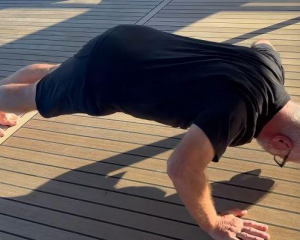It's not quite at the "beam me up, Scotty" stage yet, but Auckland University scientists are working on teleportation.
But rather than the "beaming" used in science fiction films such as Star Trek -- mostly as a cost-saving device for movie-makers -- physicists Professor Howard Carmichael, Changsuk Noh, and Matthew Collett are investigating teleporting a "quantum field", or an entire beam of light, from one location to another.
This kind of "strong" teleportation is required for some quantum information applications, such as a super-powerful quantum computer, and could lead to the teleportation of quantum images.
Previously physicists talking about "teleportation" have been describing the transfer of key properties -- quantum information, such as the spin of a particle or the polarisation of light particle -- from one particle to another without a physical link.
Overseas physicists have carried out this kind of teleportation of particles of light over a distance of 600m across the River Danube in Austria.
Now the New Zealand researchers they have proposed a scheme for teleporting a beam of light -- including its fluctuations over time -- and hope to show that a physical object from one location can emerge at another location in the same quantum state, so that any conceivable measurement would yield the same result at both sites.
The scientists want to find a way to detect a stream of photons -- light particles -- that are evenly spaced, or "anti-bunched", because that signature could allow them to verify teleportation of the full light beam.
They expect that "squeezing" light -- a technique used to enhance precision measurements -- could allow for teleportation of a quantum photon stream if the squeezing is across a broad bandwidth.
"The greatest significance of our study is at the level of clarifying fundamental principles," Prof Carmichael told a science news website, PhysOrg.com.
The scientists noted in Quantum Teleportation of the Temporal Fluctuations of Light", published in the journal Physical Review Letters, that the squeezing levels are demanding, but further investigations into designing experiments could reveal more useful methods.
Prof Carmichael said one of the biggest challenges was a requirement for high quality, flexible sources of "squeeze light".
"There are serious challenges in making the technology good enough to carry out an experiment," he said. "The main step required is to improve the source of squeezed light. "Improvements in two directions are needed: first, to achieve higher levels of squeezing, and, second, to squeeze at a high level over a broad bandwidth in the range of frequencies of the input light."
If physicists can overcome these challenges, the ability to transport light beams could lead a multi-channel version - in which two or more beams are teleported in parallel - to transport quantum images.
But the most importantly potential uses have likely not yet been undiscovered.
"The greatest significance of our study will therefore hopefully be realised in the minds of readers who come to understand clearly what it means to teleport a quantum field (beam of light), and what the technical challenges are if the full power of this mode of teleportation is to be exploited," Dr Carmichael said
The researchers are working with Andy Chia at Griffith University in Queensland, and Hyunchul Nha from Texas A & M University at Qatar.












